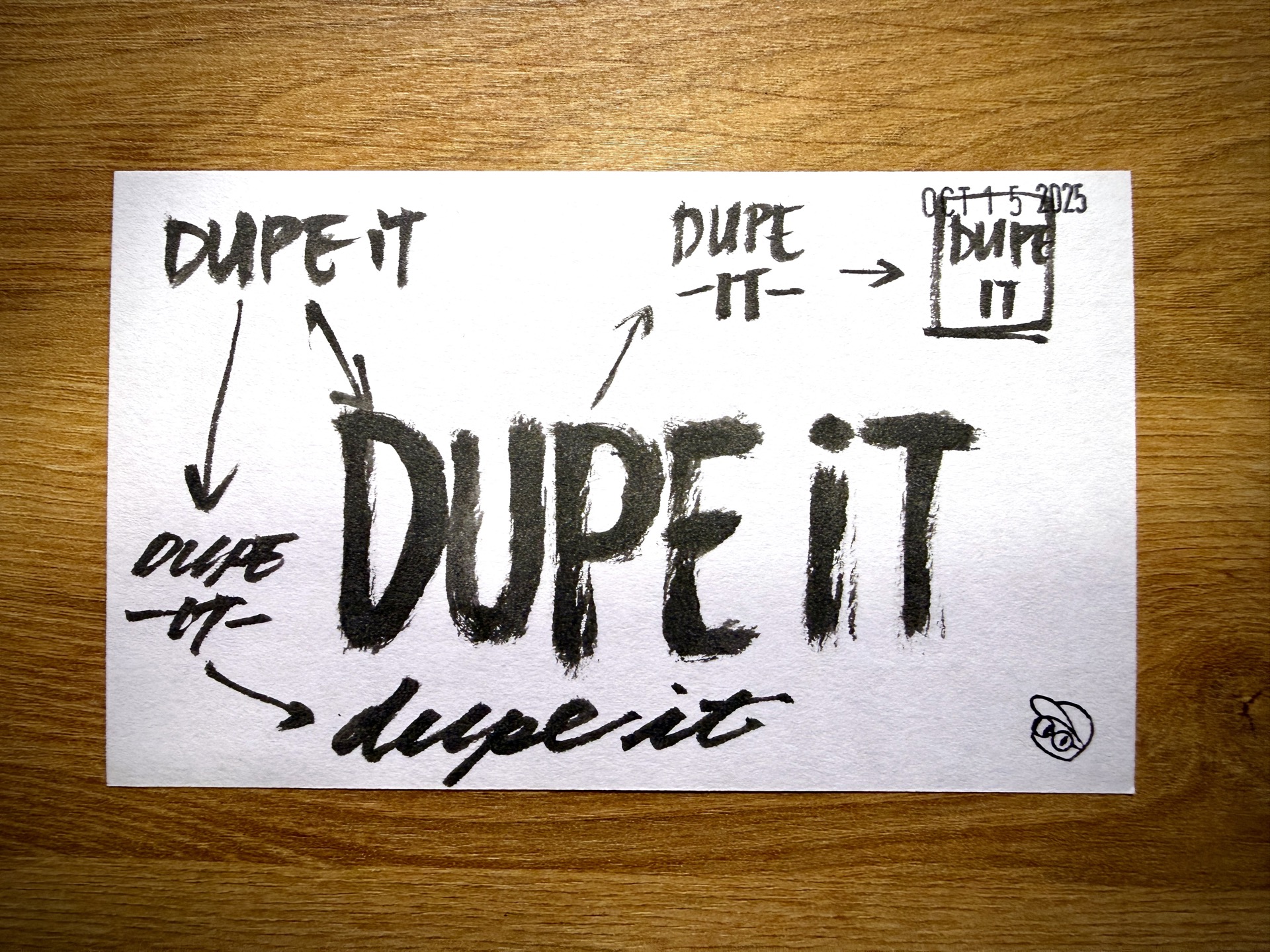About eight years ago, I watched a video that quietly changed everything for me. I’ve returned to it over a dozen times since.
It’s a recording of Aaron Draplin — Mr. Field Notes himself, the DDC — walking through his process for designing a logo from scratch.
There are so many interesting and important things showcased in that video — Putting yourself in your clients’ shoes. Sharing things in context. Exploring on paper. But the one that stuck with me the most?
Was a very small maneuver.
Command + D.
Dupe.
Permission
Why this “fancier copy-and-paste” blew my mind comes down to two things:
- The raw efficiency of trying many ideas
- The permission to be imperfect
Before this, I was still stuck in the loop so many designers fall into — polish the first thing until it feels good enough to show. Stay safe. Don’t make a mess.
I thought that’s what good design was. I was focused too much on the final results, because the final results were all that I saw.
But watching Aaron move through Illustrator in this loose, messy, exploratory way?
Slapping down ideas. Tweaking. Iterating.
DUPING.
Draplin wasn’t chasing polish. He was chasing possibility.
Again and again.
That’s when it clicked.
This isn’t chaos. This is craft.
Problem solving
Design isn’t about making the first thing right. The creative world worships polish — maybe a little too much.
We post the final render. The hero shot. The pristine outcome. And we hide the versions that got us there. We forget: discovery is supposed to be messy.
This workflow breaks that trance.
Every duplicate is a vote for experimentation over ego — Creative momentum, made with a click and a drag.
It’s not about decorating a perfect solution. It’s about pushing your understanding of the problem — by making lots of wrong things, first… fast.
Dupe it, and go.
Test an idea. Challenge a shape. Shift a color. Flip a layout.
Then move on.
Because each one gives you something: A question you hadn’t asked. A corner you hadn’t seen. A boundary you hadn’t pushed.
This isn’t just a visual design thing. It’s a general problem-solving thing.
Iteration as cartography.
Exploring
It’s you choosing to do the uncomfortable thing.
Figuring out what you don’t know. Instead of staying where you are, polishing something just because it feels safe.
It’s you exploring.
Clearing the fog with speed runs. Discovering more of your problem’s overworld map. Deciding what truly needs to happen now, and what you can safely defer later.
Dupe it, and go. Dupe it, and go. Dupe it, and go.
Scientifically throwing spaghetti — until you find that one strand that sticks. That single thread that sings.
And in the process?
You may have accidentally constructed many of the pieces you need to solve the whole gosh darn thing.
Not just a single hyper-polished TDD-certified function that does one thing perfectly and not much else — but an entire system, defined through motion.
And from that point?
You choose what to polish. Because now, you’ve got something real with polishing.
Motion
There was a lot of “dupe it” happening while working on Webflow’s new GSAP-powered Interactions.
All over the place.
From sub-components, to state management, to visual Timeline logic, test details — you name it. If we could dupe it, we probably did.
And you know what?
It turned out fine.
We stayed on top of it. Tidied as we went. Swept as we stepped.
Because duping it helped us discover what to do next — by giving us something solid to stand on.
Duplication is...
And wouldn’t you know it?
It was Sandi Metz who put it best:
“Duplication is far cheaper than the wrong abstraction.”
Damn right it is.
Duplication as real feedback, not theoretical elegance.
Dupe it, and go.
